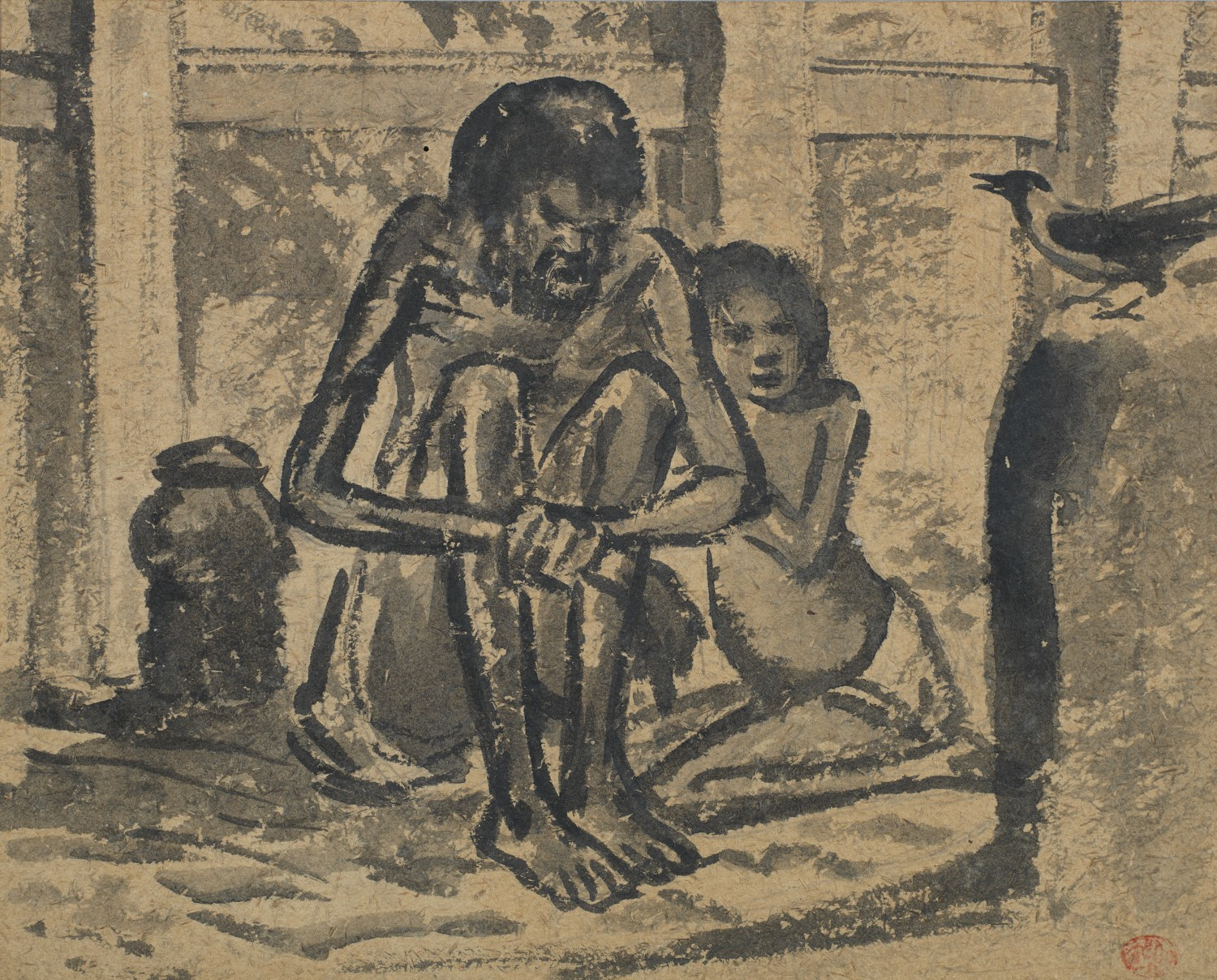Sangram: Looking at Zainul Abedin with a new lens
An exhibition of artworks by Shilpacharya Zainul Abedin, 'Sangram,' was inaugurated on 13 December and is open to all until 31 December at Gallery Chitrak

Concerned with the plight of his countrymen, Shilpacharya Zainul Abedin side-stepped his own career in the service of creating opportunities for future generations, breathing life into the modern art movement in Bangladesh.
Sangram, a show inaugurated on 13 December, is exhibiting a collection of 125 artworks by Shilpacharya Zainul Abedin, at the Gallery Chitrak in Dhanmondi.
Zainul's extraordinary abilities began to surface during his student days and earned him fame as an artist all over India, even before he completed his graduation. Praise for Zainul's acclaimed famine sketches passed beyond the borders of the country, and earned him recognition all over the world. Yet, he was not content with praise.
Zainul wanted the people to have the means of reaching their creative potential. Along with Anwarul Huq, Quamrul Hasan, Khawaja Shafique Ahmed, Safiuddin Ahmed and Habibur Rahman, he established the Government College of Arts and Crafts, presently known as the Faculty of Fine Art, in 1948.
Despite arts and crafts existing since ancient times in East Bengal (presently Bangladesh), the development of arts faced stagnation due to the lack of opportunities during the time of the Partition. Times were difficult and families of potential artists, especially from the middle and lower-middle class, outright refused or were extremely reluctant to let their children pass up more job-oriented and professional training in favour of artistic careers. Zainul and his colleagues went from door to door convincing parents and prospective students. Momentum picked up from the first batch of students.
The benefits of Zainul's legacy are still reaped by artists to this day.

Sangram includes paintings and sketches from his Famine series, Monpura series, works depicting the struggles of everyman, artworks he created during his visit to Palestine, the counter discourse he created by depictions of various animals (i.e. bulls and crows), and never before seen artworks he created during the 1971 Liberation War of Bangladesh.
"Zainul Abedin had a very humanistic point of view. He protested against injustice through his artworks. He created a counter discourse in his own language," said Sumon Wahed, curator of the show.
Apart from the artworks, the show also includes tools used by the artist, as well as doodles, letters and some of his notebooks.
"Out of the 125 artworks displayed here, 122 of them were lent to us by Jahanara Abedin. Three paintings are from the private collection of Md. Aziz Khan, Chair of Summit Group," said Sumon. "I wanted the audience to look at the life and works of Zainul so that they themselves can think about it. I did not want to send a straightforward message. I want the audience to explore Zainul's journey under a new light, look at it from a new lens."
Sangram is open to all from 11 AM to 8 PM, everyday, until 31 December.
TBS Picks: A selection of artworks with a description from the curator
Crow. Black ink and wash on paper. 1944
This is part of his famine series. It is very interesting how the artist chose his materials; he used a brown rough paper for this piece.

And it says so much about the painting. If the same artwork was done on a smoothe white paper, perhaps it would not have the same impact.
Famine Sketch. Black ink on paper. 1943
We have seen two different styles in his Famine series.

The first paintings were primarily composed with black lines. But in the later works, he also used a wash in his paintings.
These works are both powerful and haunting.
Monpura. Watercolour and wax on paper. 1970
This is from his Monpura series. He depicted the devastation caused by tidal waves in Monpura of Bhola in 1970.

He first applied the wax on paper and painted over it. This is how he would achieve this effect.



 Keep updated, follow The Business Standard's Google news channel
Keep updated, follow The Business Standard's Google news channel















